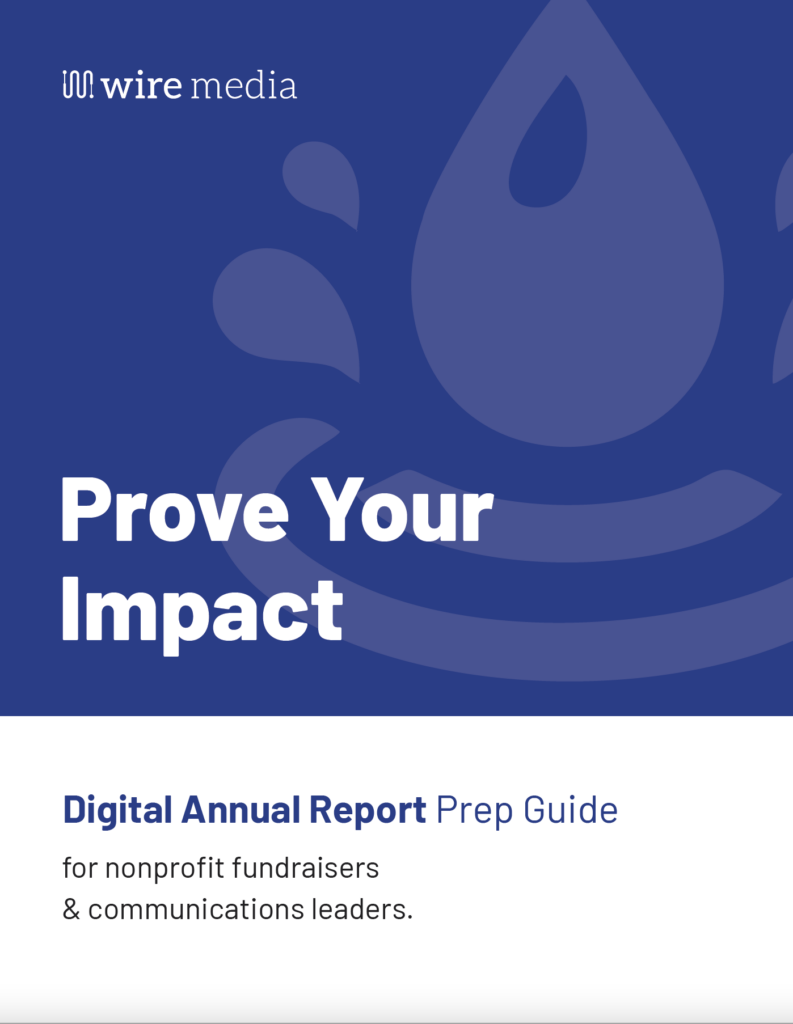
If you’re working in the nonprofit world, you already know how important it is to show the impact of your work. But communicating that impact to different audiences—donors, volunteers, board members, and the communities you serve—can be tricky. Some people love numbers and data, while others connect more with personal stories. The key to success: use both!
We’ll cover these three topics:
- What impact metrics to track (both numbers and stories)
- How to share these metrics on your website and social media
- How to engage your audience in meaningful conversations about your impact
By the end, you’ll have a clear strategy for showing the world the difference your nonprofit makes.

Learn the steps to take to get you and your team ready to create a digital annual report that proves your impact.
Get the ReportChoosing the Right Impact Metrics
Impact metrics help you measure and share the results of your work. These can be both quantitative (numbers and data) or qualitative (stories and experiences).
Quantitative Metrics (The Numbers)
Numbers help people quickly understand the scale of your impact. Here are some key metrics you might track:
- People Served – How many individuals or families have benefited from your programs?
- Programs Delivered – The number of events, workshops, meals served, or homes built.
- Volunteer Hours – The total time donated by volunteers.
- Dollars Raised – How much funding you’ve secured and where it’s going.
- Success Rates – How many program participants reach key goals (e.g., “85% of students in our tutoring program improved their reading skills”).
Qualitative Metrics (The Stories)
Stories help people connect emotionally with your mission. Here’s how to collect and share them:
- Testimonials – Quotes from people who’ve benefited from your work.
- Case Studies – In-depth stories that show a problem, your nonprofit’s solution, and the outcome.
- Photos & Videos – Images of your work in action and how it impacts lives.
- Volunteer & Staff Stories – Share why people love working with your organization.
A mix of numbers and stories will give a full picture of your nonprofit’s success!
Sharing Impact Metrics on Your Website and Social Media
Once you have strong impact data, you need to share it in a way that’s engaging and easy to understand.
On Your Website
Your website is one of the best places to highlight your impact. Here’s how:
- Create an “Impact” or “Our Results” Page
- Make a dedicated page where you share key stats and success stories.
- Use easy-to-read infographics, charts, and short videos.
- Show Impact on Your Homepage
- Include key numbers (e.g., “10,000 meals served this year”) in bold, easy-to-read sections.
- Add a scrolling section with success stories and testimonials.
- Use Interactive Maps or Timelines
- Show your nonprofit’s growth over time or highlight different locations you serve.
On Social Media
Your audience is already scrolling — so make your impact stand out!
Best Ways to Share Metrics on Social Media:
- Quick Stats in Graphics – Create eye-catching images with key numbers (Canva is a great free tool for this!).
- Short Videos & Reels – A 30-second clip with a success story or a staff member sharing results can be powerful.
- Impact Highlights on Instagram & Facebook Stories – Keep a highlight reel of key numbers and success stories.
- Behind-the-Scenes Content – Show the work being done in real-time.
- Engaging Captions – Pair your impact data with a personal story to make it more relatable.
For example, instead of just saying:
“We served 5,000 meals this year!”
Try:
“Thanks to our amazing volunteers and donors, we served 5,000 meals this year! That’s 5,000 times a child didn’t go to bed hungry. Meet Sarah, a single mom who shares how your support helped her family. ❤️ [Link to her story]”
See the difference? The second version adds emotion and connection.
Engaging Supporters in Conversations About Impact
Now that you’re sharing your impact, how do you get people to engage with it?
Ask Questions
Invite your audience to share their thoughts. Some examples:
- “What impact statistic surprises you the most?”
- “What kind of success stories inspire you the most?”
- “What other ways do you think we could make a difference?”
These questions encourage comments, shares, and deeper engagement.
Host Live Q&A Sessions
Go live on Instagram, Facebook, or LinkedIn to discuss your impact. Have a staff member or beneficiary share their story. Encourage people to ask questions in real-time.
Create an Annual Impact Report (That People Want to Read)
Traditional nonprofit reports can be long and boring. Instead, make it engaging by:
- Using lots of visuals and short, easy-to-read sections
- Featuring real people and their success stories
- Making a short video summary of the report
You can post this report on your website, email it to supporters, and share pieces of it on social media.
Invite Supporters to See the Impact Firsthand
- Offer virtual or in-person tours of your nonprofit in action.
- Invite donors and volunteers to special “Impact Update” meetings.
- Share behind-the-scenes moments via Instagram Stories or TikTok.
When people feel personally connected to your impact, they’re more likely to stay involved!
Final Word
Communicating your impact isn’t just about showing off numbers—it’s about telling a compelling story that makes people feel like they’re part of something bigger.
To recap:
✅ Use both numbers and stories to paint a full picture of your impact.
✅ Share impact metrics in easy-to-read formats on your website and social media.
✅ Engage supporters by asking questions, going live, and making reports fun to read.
✅ Make it personal! Show the real people behind the numbers.
By sharing your impact engagingly and transparently, you’ll build trust, attract more supporters, and create a bigger difference in the world.
Further reading and resources: